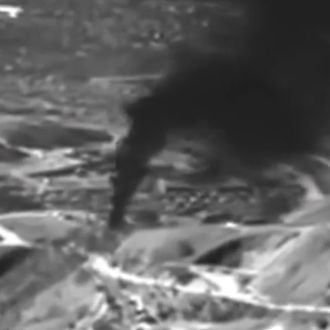
After weeks in which residents of the Porter Ranch district of Los Angeles have reported a bad smell, nosebleeds, headaches, dizziness, and vomiting, the source of their illness was confirmed last month: the largest gas leak in history, coming from a storage well operated by the Southern California Gas Company. On Wednesday, California governor Jerry Brown declared a state of emergency, evacuating the area of its 30,000 residents. The leak has emitted 33 tons of natural gas per hour since it was detected on October 23. Given that methane is a powerful greenhouse gas, many times more heat-trapping than carbon dioxide, this ranks among the worst environmental disasters of the past decade.
More than 2,000 families have been moved from the wealthy suburb on the edge of the San Fernando Valley since the big stink began rolling through last fall. Nobody’s said yet whether families will be compensated for damaged property, medical bills, and sunken property values. (Fortunately, experts say, exposure to methane, the chief component of natural gas, has no long-term health effects. The physical reactions are to mercaptan, the additive that gives natural gas that distinctive smell and allows leaks to be detected.) At this point, the Porter Ranch leak accounts for 25 percent of the methane emitted from all sources in California every day. “This is the equivalent of the BP oil spill, except it’s on land, in a populated community,” Mitchell Englander, the Los Angeles city councilman representing Porter Ranch, told the New York Times. “This is one of the most disruptive, catastrophic environmental events that I’ve seen. It’s a truly chaotic crisis.” The current plan to plug the leak is to drill a second well and siphon the gas off, a procedure that will require extreme care to avoid a spark that sets off an explosion. SoCalGas estimates that will be done by late March.
Residents of the area are already suing the gas company, and L.A. Weekly has revealed that a safety valve deep below the surface of the Aliso Canyon Underground Storage Facility, which would have allowed the operators to cut off the leak, was removed almost 40 years ago and never replaced. Rodger Schwecke, a SoCalGas executive, confirmed to L.A. Weekly that the company was not required by law to have one in place because the well was not “critical” — a formal definition that means it’s close to residences or roads.
The California Environmental Defense Fund has a live-updating methane emissions count that also displays the value of the gas lost, so you can follow along with the leak at home.





























